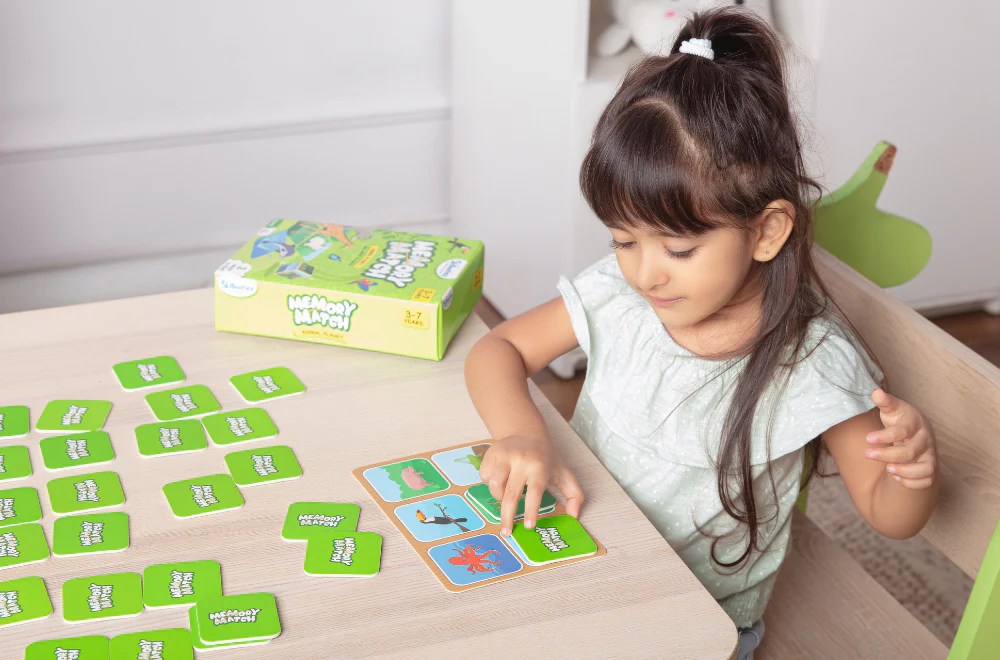
Educational card games for kids open a world of fun and learning, cleverly blending play with educational content. These games are designed to captivate children’s attention while teaching essential skills across various subjects, including math, language arts, and science.
With vibrant themes and interactive gameplay, educational card games provide an excellent way for kids to enhance their knowledge and critical thinking skills. They cater to different age groups, ensuring that each child finds a game that not only entertains but also enriches their learning experience.
Overview of Educational Card Games for Kids
Educational card games for kids are designed to engage young learners in a playful yet effective manner, combining fun with fundamental learning experiences. These games not only entertain but also promote cognitive development, critical thinking, and social skills among children. By integrating educational content with interactive gameplay, these card games create an environment where children can explore new concepts while enjoying themselves.These games cover a diverse range of themes and subjects that cater to various aspects of children’s learning.
Topics can include math, language arts, science, and even social studies, allowing children to develop essential skills through different lenses. This versatility means that there are educational card games suitable for every age and interest, whether it’s enhancing vocabulary, mastering arithmetic, or understanding basic scientific principles.
Themes and Subjects in Educational Card Games
Educational card games often span multiple subjects, making them versatile tools for learning. The integration of themes helps children relate their gameplay experiences to real-world knowledge. Here are some of the key subjects these games cover:
- Math: Games such as “Math Dice” encourage children to practice addition, subtraction, multiplication, and division in a fun setting. They promote numerical fluency and problem-solving skills.
- Language Arts: “Story Cubes” and “Word Whomp” help children develop their vocabulary and narrative skills through creative storytelling and word formation challenges.
- Science: Games like “Science Bingo” introduce scientific concepts such as the life cycle, human anatomy, and ecosystems, sparking curiosity and interest in the natural world.
- Social Studies: Games based on geography, history, and cultures can enhance awareness and understanding of the world around them, fostering a sense of global citizenship.
The benefits of these educational card games extend beyond just the subjects covered. They also encourage teamwork, communication, and strategic thinking. Playing these games in groups allows children to develop social skills and learn the value of collaboration.
“Educational card games transform learning into an engaging adventure, enabling children to grasp complex concepts through play.”
Popular educational card games vary by age group, catering to the developmental stages of children. For younger kids, games like “Go Fish” can be adapted to include matching letters or numbers. For older children, “SET” offers a challenge in pattern recognition and critical thinking. These games provide a solid foundation for lifelong learning while ensuring children remain engaged and motivated.
Comparison of Educational Card Games and Other Game Types

Educational card games have carved out a unique niche within the broader landscape of gaming, providing a fun yet instructional environment for children. By analyzing the educational value and engagement levels of various game types, we can better understand where educational card games excel and how they compare to traditional board games, arcade games, and online platforms.
Comparison with Board Games
When comparing educational card games with board games, one can identify several similarities and differences in terms of educational value and engagement. Both types of games promote critical thinking, strategic planning, and social interaction. However, educational card games typically require less setup time and can be more portable, making them convenient for quick play sessions both at home and on the go.
The educational value of board games often lies in their structured gameplay, which can encompass complex themes and rules. For instance, a game like “Settlers of Catan” fosters negotiation and resource management skills, while educational card games, such as “Math Fluxx,” can emphasize specific academic skills, like arithmetic, through rapid and dynamic play. In terms of engagement, educational card games often appeal to younger audiences due to their visually stimulating designs and faster-paced action.
Board games, on the other hand, may attract players seeking deeper narrative experiences and longer play sessions. Overall, both platforms contribute significantly to learning but do so through different mechanisms and player experiences.
Skill Development in Arcade and Coin-Op Games
Educational card games and arcade games, including coin-operated machines, differ fundamentally in their approach to skill development. Arcade games typically emphasize hand-eye coordination, reflexes, and timing, often providing instant feedback through scoring systems and levels. Games like “Dance Dance Revolution” or “Street Fighter” require quick thinking and physical responses, fostering motor skills and cognitive speed.In contrast, educational card games focus on cognitive skills such as problem-solving, memory retention, and strategic thinking.
For example, games like “Set” challenge players to recognize patterns and make swift decisions based on limited information. While both game types encourage skill refinement, the core abilities targeted are distinct. Moreover, educational card games often incorporate collaborative elements, encouraging teamwork and communication among players, whereas arcade games tend to focus more on individual performance. This distinction highlights the unique contributions of each game type towards a child’s development.
Integration with Online Games
The rise of online gaming has created new opportunities for traditional educational card games by complementing their gameplay with digital experiences. Online platforms can provide interactive tutorials, competitive play, and a wider array of subject matter. For instance, a game like “QuizUp” allows children to engage in trivia across various topics, reinforcing knowledge in a manner that traditional card games alone may not achieve.Online games also offer flexibility in learning styles through adaptive algorithms that adjust difficulty based on the player’s performance.
This personalized approach can enhance the learning experience, making it more tailored and effective. In addition to this, online communities can create a sense of belonging and competition, motivating children to improve and apply their knowledge in diverse scenarios.Furthermore, many educational websites now feature digital versions of popular card games, allowing for easy access and the ability to play with friends across distances.
This integration provides a holistic learning experience, blending the tactile advantages of physical card games with the expansive possibilities offered by digital platforms.
Designing Your Own Educational Card Game
Creating an educational card game can be a fun and rewarding project that combines creativity with learning objectives. This guide will help you navigate the design process, ensuring that your game is not only enjoyable but also effective in teaching specific concepts. By following a structured approach, you can develop a game that engages kids and fosters meaningful learning experiences.When designing your educational card game, consider the fundamental elements that will shape its effectiveness and appeal.
Game mechanics, artwork, and age appropriateness play crucial roles in ensuring that the game resonates with your target audience while fulfilling educational goals. Taking the time to Artikel these components will lead to a more polished final product that meets both entertainment and educational standards.
Step-by-Step Guide for Game Design
Begin your card game design with a clear plan. Follow these steps to ensure a comprehensive approach:
1. Define Learning Objectives
Identify the specific skills or knowledge you want players to gain. These could include math skills, vocabulary building, or science concepts.
2. Choose Game Mechanics
Decide on how players will interact with the game. Common mechanics include matching, strategy, or trivia-based questions.
3. Create Themes and Storylines
Develop a theme that aligns with the educational content. For example, a math game might feature a treasure hunt where players solve problems to move forward.
4. Develop Card Content
Create the actual content for the cards. This includes questions, challenges, or tasks that players must complete, ensuring they relate directly to your learning objectives.
5. Design Artwork and Layout
Plan the visual aspects of your game. Choose colors, fonts, and illustrations that are appealing to the age group you are targeting.
6. Playtest the Game
Once you have a prototype, gather feedback from potential players. Observe how they interact with the game and make necessary adjustments.
7. Finalize and Produce
After incorporating feedback, finalize your game design and consider how you will produce the cards, whether through printing at home or professional services.
Considerations in Game Design
When designing your card game, it’s essential to consider the following elements to enhance its effectiveness:
Game Mechanics
Choose mechanics that not only entertain but also promote the learning objectives. For example, cooperative gameplay can encourage teamwork and communication.
Artwork
Engaging visuals are vital. The artwork should be vibrant and appealing, capturing the attention of children while relating to the educational content.
Age Appropriateness
Ensure that the complexity of the cards and the gameplay mechanics are suitable for your target age group. The language used in the cards should match the comprehension level of the players.
Materials and Resources for Prototyping
Creating a prototype of your educational card game requires specific materials and resources. Here’s a list to get you started:
Cardstock or Thick Paper
Use sturdy paper for durability, allowing repeated use of the cards.
Markers and Colored Pencils
For designing artwork and adding color to your prototypes.
Design Software
Utilize programs like Canva or Adobe Illustrator to create visually appealing card designs digitally.
Print Services
If you prefer a professional finish, research local or online printing services that specialize in custom card games.
Feedback Forms
Prepare forms to collect feedback from playtesters, enhancing your iteration process.
Game Accessories
Consider additional elements like tokens, dice, or a game board if your gameplay incorporates them.By following this structured approach to designing your own educational card game, you can create a fun and engaging way for kids to learn while playing. The combination of thoughtful game mechanics, appealing visuals, and age-appropriate content will ensure your game stands out and achieves its educational goals.
Ending Remarks

In conclusion, educational card games for kids are not just a source of entertainment—they offer invaluable learning opportunities that can shape a child’s intellectual growth. By merging learning with engaging play, these games foster curiosity and skills that will benefit children for years to come.
FAQ Summary
What age group are educational card games suitable for?
Educational card games are designed for various age groups, typically ranging from toddlers to preteens, allowing for tailored learning experiences.
How can educational card games enhance learning?
These games promote critical thinking, problem-solving, and retention of knowledge through interactive play that engages children in a way that traditional learning methods may not.
Are educational card games expensive?
While some educational card games can be pricey, many affordable options are available, and you can even create your own at home for a low cost.
Can educational card games be played online?
Yes, many educational card games have online versions that provide interactive experiences and can complement traditional gameplay.
How do I choose the right educational card game for my child?
Consider your child’s age, interests, and learning objectives when selecting a game. Read reviews and look for games that incorporate subjects your child is curious about.





